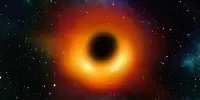Generally speaking, light is a need if you want to see it. Only because the light from your screen was focused into your retinas, transformed into electrical signals, and sent up the optic nerve to your brain for interpretation as a collection of words and images can you read this right now.
But what if there was a simpler way to see things? Although it may seem implausible and perhaps go against the fundamental idea of sight, it is actually entirely feasible thanks to the strange world of quantum mechanics.
A recent report released this month emphasizes that the pursuit of understanding measurements has been a rich source of intellectual intrigue “from the genesis of quantum mechanics.”
The existence of an event (for instance, the presence of a target in a region of space) is evaluated, and interaction-free measurements fall under the category of quantum hypothesis testing, the article continues. Here, the challenge is to find a microwave pulse so that the detector hasn’t irreversibly absorbed it by the time the protocol is complete.
Find a method to “see” a microwave pulse without using a single photon, to put it another way.
Even though Anton Zeilinger, one of the recipients of the 2022 Nobel Prize in Physics, did the original experiment on which their experiment was based, the Aalto University team behind the current article would not be the first to accomplish such a feat if it were to be successful. Zeilinger had been experimenting with lasers and mirrors rather than microwaves and superconductors, which was a critical distinction.
Because of this, study co-author Gheorghe Sorin Paraoanu said in a statement, “we had to adapt the concept to the diverse experimental instruments available for superconducting devices.” To detect the existence of microwave pulses, the scientists used specially modified transmons, a form of superconducting qubit created back in 2007.
The interaction-free protocol had to be altered in a significant way, according to Paraoanu: “We added another layer of ‘quantumness’ by using a greater energy level of the transmon.” The resulting three-level system’s quantum coherence was then utilized as a resource.
The specific characteristic that causes quantum mechanics to be so perplexing is referred to as “quantum coherence.” The Schrödinger’s Cat paradox is when an object may exist in two states at once, despite the fact that this defies the laws of classical physics. The team was able to not only deal with this impact but also use it to their advantage because the quantum world, in contrast, has no such issues with superpositions.
The experiment was successful, and the results were supported by theoretical models. Shruti Dogra, another co-author on the article, stated, “We also demonstrated that even very low-power microwave pulses can be identified efficiently using our methodology.
You might be left thinking, “That’s cool, but it’s kind of specialized, isn’t it?” The real kicker, though, is that this discovery has considerably more uses than just a cutesy example of a quantum oddity.
According to Paraoanu, “our method could be used in quantum computing to diagnose microwave-photon conditions in specific memory elements.” This method of retrieving information without interfering with the operation of the quantum processor can be viewed as extremely effective.
The research team is already considering additional applications of their findings, including counterfactual quantum computing and counterfactual communication, in which calculations can produce results without ever running the computer. Counterfactual communication is communication between two parties in which no physical particles are transferred.
You’re not mistaken if that strikes you as odd or nonsensical. But those kinds of perplexing ideas are actually just a typical Thursday in the quantum realm.
















